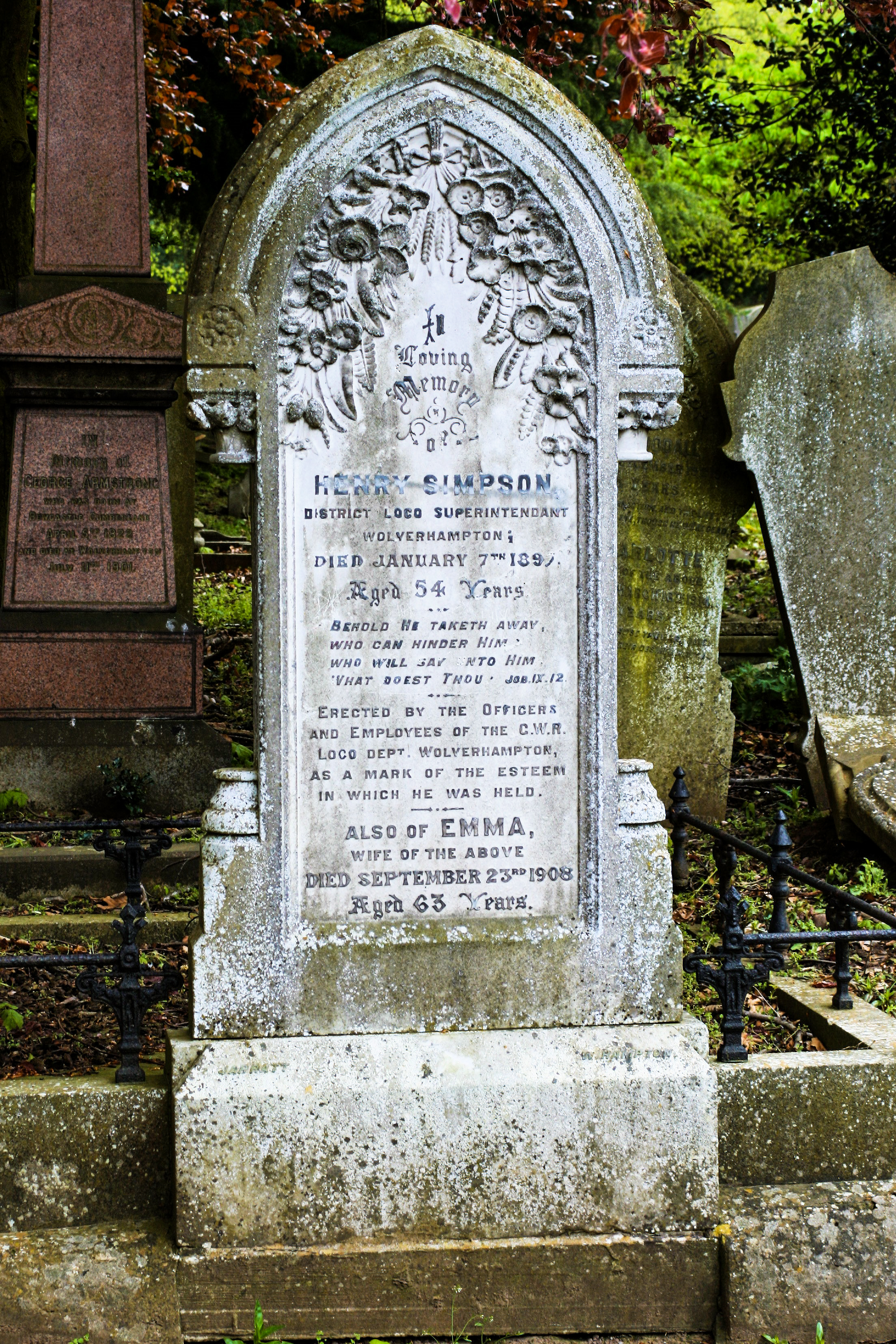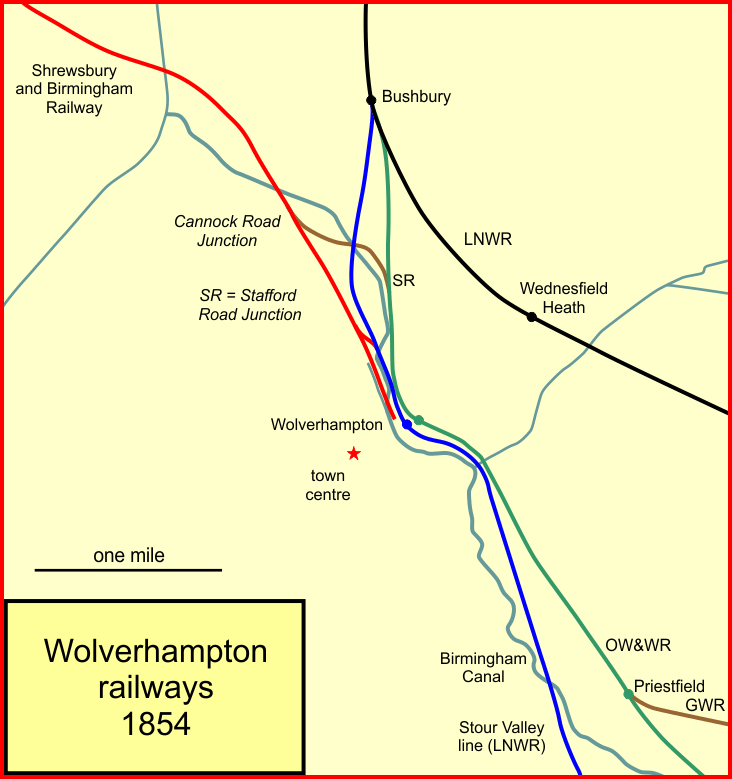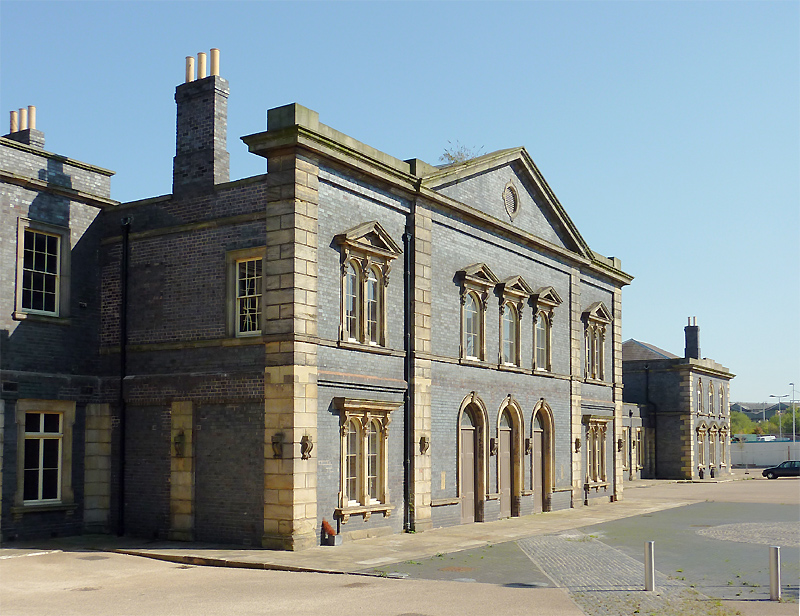|
Bushbury Railway Station
Bushbury railway station was a railway station opened by the London and North Western Railway on 2 August 1852. It served the Bushbury area of Wolverhampton, and near to the junction of Showell Road and Bushbury Lane. The station was located within the Bushbury Junction complex, and was between the Grand Junction line to Wednesfield Heath and the later Stour Valley Line The Stour Valley Line is the present-day name given to the railway line between Birmingham and Wolverhampton, in England. It was authorised as the Birmingham, Wolverhampton and Stour Valley Railway in 1836; the title was often shortened to the ... to Wolverhampton High Level; and just to the north of the connecting line to Wolverhampton Low Level. The station closed in 1912. ReferencesWest Midlands Local Transport Plan Corridor U study (PDF) [...More Info...] [...Related Items...] OR: [Wikipedia] [Google] [Baidu] |
Bushbury
Bushbury is a suburban village and ward in the City of Wolverhampton in the West Midlands, England. It lies two miles north-east of Wolverhampton city centre, divided between the Bushbury North and Bushbury South and Low Hill wards. Bushbury also lies near to the villages of Coven, Featherstone and Four Ashes which are in South Staffordshire. Bushbury is a mixed area of private and council owned houses, built since the 1920s, and lies in the shadow and on the slope of Bushbury Hill. History Bushbury was recorded in the Domesday Book of 1086 as 'Biscopsberie'. Toponymists believe that the name comes from the Old English 'biscop' (bishop) and 'burh' (fortification), so Bushbury possibly means 'Bishops fortification'. St. Mary's Church lies on Bushbury Lane. In the chancel of the church can be found the 'Founders Arch', this is actually the tomb of Sir Hugh de Byshbury who is reputed to have built the church (chancel) in the 15th century. Just beyond the south door in the ch ... [...More Info...] [...Related Items...] OR: [Wikipedia] [Google] [Baidu] |
Wolverhampton
Wolverhampton () is a city, metropolitan borough and administrative centre in the West Midlands, England. The population size has increased by 5.7%, from around 249,500 in 2011 to 263,700 in 2021. People from the city are called "Wulfrunians". Historically part of Staffordshire, the city grew initially as a market town specialising in the wool trade. In the Industrial Revolution, it became a major centre for coal mining, steel production, lock making, and the manufacture of cars and motorcycles. The economy of the city is still based on engineering, including a large aerospace industry, as well as the service sector. Toponym The city is named after Wulfrun, who founded the town in 985, from the Anglo-Saxon ''Wulfrūnehēantūn'' ("Wulfrūn's high or principal enclosure or farm"). Before the Norman Conquest, the area's name appears only as variants of ''Heantune'' or ''Hamtun'', the prefix ''Wulfrun'' or similar appearing in 1070 and thereafter. Alternatively, the city ma ... [...More Info...] [...Related Items...] OR: [Wikipedia] [Google] [Baidu] |
Ordnance Survey National Grid
The Ordnance Survey National Grid reference system (OSGB) (also known as British National Grid (BNG)) is a system of geographic grid references used in Great Britain, distinct from latitude and longitude. The Ordnance Survey (OS) devised the national grid reference system, and it is heavily used in their survey data, and in maps based on those surveys, whether published by the Ordnance Survey or by commercial map producers. Grid references are also commonly quoted in other publications and data sources, such as guide books and government planning documents. A number of different systems exist that can provide grid references for locations within the British Isles: this article describes the system created solely for Great Britain and its outlying islands (including the Isle of Man); the Irish grid reference system was a similar system created by the Ordnance Survey of Ireland and the Ordnance Survey of Northern Ireland for the island of Ireland. The Universal Transverse Merca ... [...More Info...] [...Related Items...] OR: [Wikipedia] [Google] [Baidu] |
London And North Western Railway
The London and North Western Railway (LNWR, L&NWR) was a British railway company between 1846 and 1922. In the late 19th century, the L&NWR was the largest joint stock company in the United Kingdom. In 1923, it became a constituent of the London, Midland and Scottish (LMS) railway, and, in 1948, the London Midland Region of British Railways: the LNWR is effectively an ancestor of today's West Coast Main Line. History The company was formed on 16 July 1846 by the amalgamation of the Grand Junction Railway, London and Birmingham Railway and the Manchester and Birmingham Railway. This move was prompted, in part, by the Great Western Railway's plans for a railway north from Oxford to Birmingham. The company initially had a network of approximately , connecting London with Birmingham, Crewe, Chester, Liverpool and Manchester. The headquarters were at Euston railway station. As traffic increased, it was greatly expanded with the opening in 1849 of the Great Hall, designed by P ... [...More Info...] [...Related Items...] OR: [Wikipedia] [Google] [Baidu] |
Railway Station
Rail transport (also known as train transport) is a means of transport that transfers passengers and goods on wheeled vehicles running on rails, which are incorporated in tracks. In contrast to road transport, where the vehicles run on a prepared flat surface, rail vehicles (rolling stock) are directionally guided by the tracks on which they run. Tracks usually consist of steel rails, installed on sleepers (ties) set in ballast, on which the rolling stock, usually fitted with metal wheels, moves. Other variations are also possible, such as "slab track", in which the rails are fastened to a concrete foundation resting on a prepared subsurface. Rolling stock in a rail transport system generally encounters lower frictional resistance than rubber-tyred road vehicles, so passenger and freight cars (carriages and wagons) can be coupled into longer trains. The operation is carried out by a railway company, providing transport between train stations or freight customer facilit ... [...More Info...] [...Related Items...] OR: [Wikipedia] [Google] [Baidu] |
Wednesfield Heath Railway Station
Wednesfield is a town and historic village in the City of Wolverhampton, West Midlands, England, It is east-northeast of Wolverhampton city centre and about from Birmingham and is part of the West Midlands conurbation. It was historically within the county of Staffordshire. Its name comes from the Old English ''Wōdnesfeld'' meaning ''Woden's Field'', open land belonging to, or holy to, the high god of the Germanic mythology, Germanic Pantheon. It is reported by the English Dialectal Society in the publication "A Glossary of dialectal place-nomenclature" available on-line in the Internet Archive of The University of Toronto Library, that the place name "Wednesfield" is pronounced by the local populace as "Wencefield". Local areas include Ashmore Park and Wood End, Wolverhampton, Wood End. There is also a formal garden at Wednesfield Park. Geography Wednesfield lies at (52.5998°, −2.0827°), and is located to the northeast of Wolverhampton city centre on the northern fr ... [...More Info...] [...Related Items...] OR: [Wikipedia] [Google] [Baidu] |
Stour Valley Line
The Stour Valley Line is the present-day name given to the railway line between Birmingham and Wolverhampton, in England. It was authorised as the Birmingham, Wolverhampton and Stour Valley Railway in 1836; the title was often shortened to the Stour Valley Railway. The line opened in 1852, and the line is now the main line between those places. Associated with its construction was the building of the major passenger station that was later named New Street station, and also lines in tunnel each side of the station, connecting to the existing routes. The station was opened in 1854. Before completion, the Company became controlled by the London and North Western Railway, which used dubious methods to harm competitor railways that were to be dependent on its completion. The line was electrified in 1966 and now forms part of the Rugby–Birmingham–Stafford Line, an important and very heavily used part of the railway network. Origins Birmingham's first main railway passenger ter ... [...More Info...] [...Related Items...] OR: [Wikipedia] [Google] [Baidu] |
Wolverhampton Railway Station
Wolverhampton railway station in Wolverhampton, West Midlands, England is on the Birmingham Loop of the West Coast Main Line. It is served by Avanti West Coast, CrossCountry, Transport for Wales and West Midlands Trains services, and was historically known as Wolverhampton High Level. History The first station named ''Wolverhampton'' had opened on the edge of the town centre in 1837 on the Grand Junction Railway, this station was renamed Wednesfield Heath in 1855, shortly after the present station was opened, and then was closed in 1873. On 12 November 1849, the Shrewsbury and Birmingham Railway opened a temporary terminus to its line, at a location very close to the present station. The present station was opened on 1 July 1852 by the Birmingham, Wolverhampton and Stour Valley Railway, a subsidiary of the London and North Western Railway (LNWR); it was named ''Wolverhampton Queen Street''. The only visible remnant of the original station is the Queen's Building, the ga ... [...More Info...] [...Related Items...] OR: [Wikipedia] [Google] [Baidu] |
Wolverhampton Low Level Railway Station
Wolverhampton Low Level was a railway station on Sun Street, in Springfield, Wolverhampton, England. It was built by the Great Western Railway (GWR), on their route from London Paddington to Birkenhead, via Birmingham Snow Hill. It was the most northerly broad-gauge station on the GWR network. Design The OWWR's engineer, John Fowler, designed the frontage, while the GWR's Isambard Kingdom Brunel designed the layout. The station building is two storeys high and constructed of Staffordshire blue brick in Italianate style, which is an unusual combination but the blue brick was abundant in the area in the 19th century. The design of the station was similar to that of the earlier High Level station. The main building has a large pediment; tall, round-headed, pedimented windows with ashlar brackets on the first floor which the main entrance on the ground floor. Plainer wings extend to either side of the main building which protrude to the front. The interior of the former booki ... [...More Info...] [...Related Items...] OR: [Wikipedia] [Google] [Baidu] |
Grand Junction Railway
The Grand Junction Railway (GJR) was an early railway company in the United Kingdom, which existed between 1833 and 1846 when it was amalgamated with other railways to form the London and North Western Railway. The line built by the company was the first trunk railway to be completed in England, and arguably the world's first long-distance railway with steam traction. The lines which comprised the GJR now form the central section of the West Coast Main Line. History The Grand Junction Railway Company was established in the second half of 1832 by the consolidation of two rival companies: the Birmingham and Liverpool Railway Company and the Liverpool and Birmingham Railway Company. Authorised by Parliament on 6 May 1833 and designed by George Stephenson and Joseph Locke, the Grand Junction Railway opened for business on 4 July 1837, running for from Birmingham through Wolverhampton (via Perry Barr and Bescot), Stafford, Crewe, and Warrington, then via the existing Warrington ... [...More Info...] [...Related Items...] OR: [Wikipedia] [Google] [Baidu] |
Railway Stations In Great Britain Opened In 1852
Rail transport (also known as train transport) is a means of transport that transfers passengers and goods on wheeled vehicles running on rails, which are incorporated in Track (rail transport), tracks. In contrast to road transport, where the vehicles run on a prepared flat surface, rail vehicles (rolling stock) are directionally guided by the tracks on which they run. Tracks usually consist of steel rails, installed on Railroad tie, sleepers (ties) set in track ballast, ballast, on which the rolling stock, usually fitted with metal wheels, moves. Other variations are also possible, such as "slab track", in which the rails are fastened to a concrete foundation resting on a prepared subsurface. Rolling stock in a rail transport system generally encounters lower friction, frictional resistance than rubber-tyred road vehicles, so passenger and freight cars (carriages and wagons) can be coupled into longer trains. The rail transport operations, operation is carried out by a ... [...More Info...] [...Related Items...] OR: [Wikipedia] [Google] [Baidu] |








